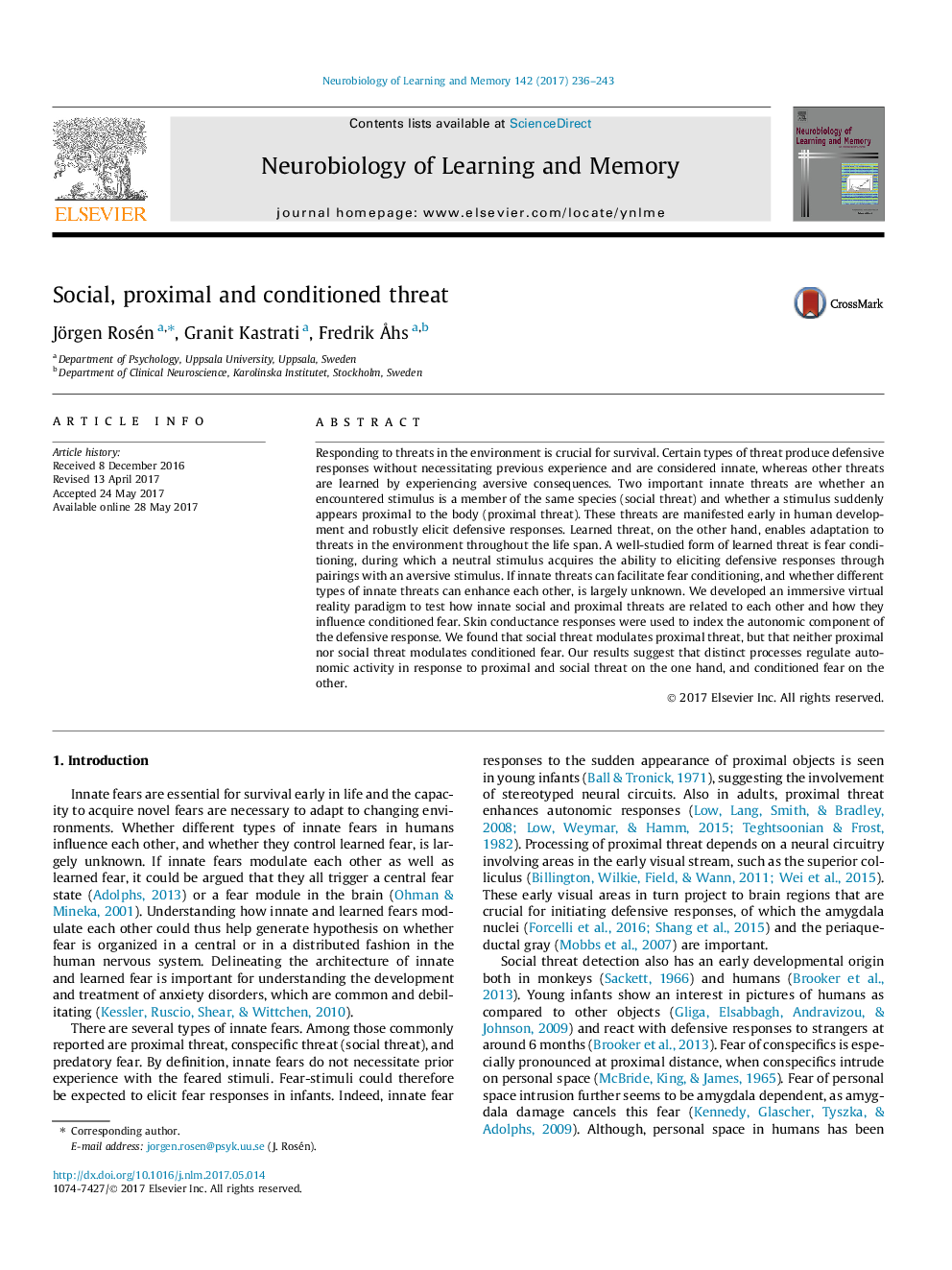| کد مقاله | کد نشریه | سال انتشار | مقاله انگلیسی | نسخه تمام متن |
|---|---|---|---|---|
| 5043141 | 1475131 | 2017 | 8 صفحه PDF | دانلود رایگان |
- Effects of social threat on proximal and conditioned threat were examined in humans.
- Social stimulus content facilitated autonomic responses to proximal threat but not to conditioned threat.
- Conditioned threat responses were not modulated by social or proximal threat.
- The autonomic component of innate and conditioned fear is suggested to depend on separate processes in the human brain.
Responding to threats in the environment is crucial for survival. Certain types of threat produce defensive responses without necessitating previous experience and are considered innate, whereas other threats are learned by experiencing aversive consequences. Two important innate threats are whether an encountered stimulus is a member of the same species (social threat) and whether a stimulus suddenly appears proximal to the body (proximal threat). These threats are manifested early in human development and robustly elicit defensive responses. Learned threat, on the other hand, enables adaptation to threats in the environment throughout the life span. A well-studied form of learned threat is fear conditioning, during which a neutral stimulus acquires the ability to eliciting defensive responses through pairings with an aversive stimulus. If innate threats can facilitate fear conditioning, and whether different types of innate threats can enhance each other, is largely unknown. We developed an immersive virtual reality paradigm to test how innate social and proximal threats are related to each other and how they influence conditioned fear. Skin conductance responses were used to index the autonomic component of the defensive response. We found that social threat modulates proximal threat, but that neither proximal nor social threat modulates conditioned fear. Our results suggest that distinct processes regulate autonomic activity in response to proximal and social threat on the one hand, and conditioned fear on the other.
Journal: Neurobiology of Learning and Memory - Volume 142, Part B, July 2017, Pages 236-243
